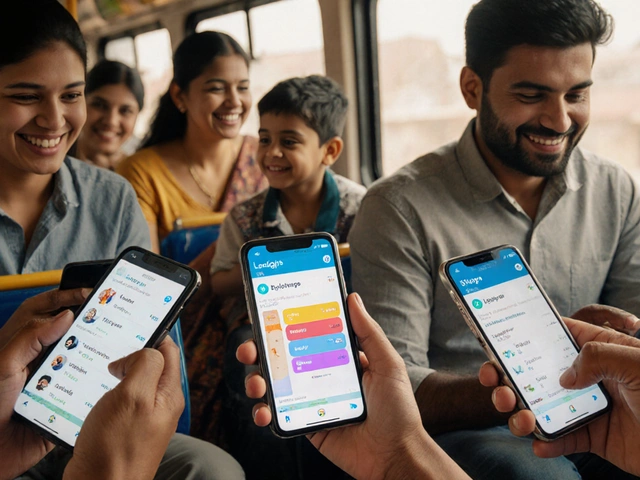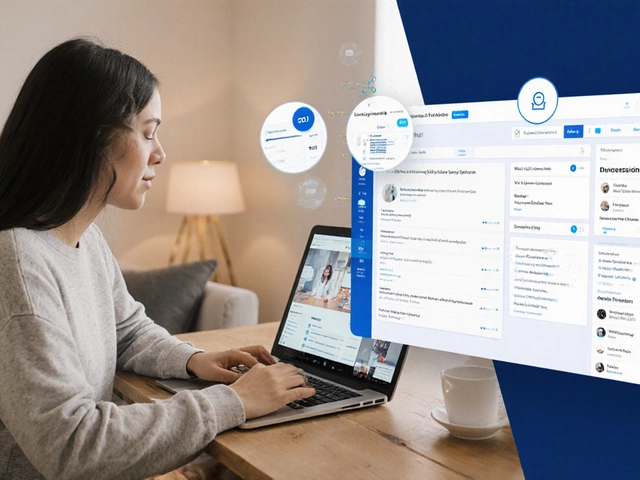There’s no single magic trick to teaching English that works for everyone. But if you’ve ever watched a student freeze up during a simple conversation-even after years of grammar drills-you know something’s broken in the system. The problem isn’t the student. It’s the method.
Grammar-Translation Isn’t Working Anymore
For decades, classrooms across the world taught English by memorizing verb tables, translating sentences from native language to English, and correcting every tiny mistake. This method produced students who could write perfect essays but couldn’t order coffee without hesitation. A 2023 study from the University of Cape Town tracked 300 adult learners over six months. Those taught with traditional grammar-translation methods showed 40% slower progress in speaking fluency compared to those using immersive, task-based methods-even when both groups spent the same number of hours studying.
Why? Because language isn’t a math equation. You don’t learn to ride a bike by studying the physics of balance. You learn by getting on the bike, wobbling, falling, and trying again. The same goes for English.
The Real Winner: Communicative Language Teaching (CLT)
The most effective method today is Communicative Language Teaching-CLT for short. It doesn’t focus on perfect grammar first. It focuses on getting learners to say something real, even if it’s messy.
In a CLT classroom, students aren’t reciting textbook dialogues. They’re debating whether social media helps or hurts relationships. They’re role-playing a job interview. They’re asking for directions in a simulated airport. Mistakes? They’re expected. Corrections happen in context, not as red pen marks on paper.
Here’s how it works in practice:
- Start with a real-life situation: ordering food, complaining about a hotel room, explaining why you’re late.
- Give learners just enough vocabulary and phrases to get started-not a full grammar lesson.
- Let them try. Let them fail. Let them try again.
- After the activity, briefly highlight useful patterns: "Oh, you said ‘I want’ five times. We can also say ‘I’d like’-it sounds more polite."
- Repeat with new situations, slowly adding complexity.
This isn’t theory. It’s what works in real classrooms in Lagos, Manila, and Cape Town. A teacher in Khayelitsha started using CLT with her Grade 10 class. After three months, students who used to hide when asked to speak began volunteering to lead group discussions in English.
Why Immersion Beats Textbooks
Immersion doesn’t mean moving to London. It means filling your daily life with English-not as homework, but as part of your routine.
Here’s what immersion looks like in 2025:
- Listening to English podcasts during your commute (not just news-comedy, storytelling, interviews).
- Watching TV shows with English subtitles, then rewatching without them.
- Joining online discussion groups on Reddit or Discord about topics you care about-gaming, cooking, politics.
- Using language exchange apps like Tandem or HelloTalk to chat with native speakers who want to learn your language.
One learner in Johannesburg started watching YouTube videos about car repairs in English. He didn’t set out to learn the language. He wanted to fix his old Toyota. Within a year, he was explaining engine problems to mechanics in fluent English. His goal wasn’t grammar. It was fixing a car. The language came with it.

Technology Helps-But Only If Used Right
Apps like Duolingo and Memrise are great for building vocabulary. But they’re not enough. They teach words in isolation. Real conversation needs rhythm, tone, hesitation, and emotion.
The best tech tools for speaking are the ones that force interaction:
- Speechling: Record yourself speaking, get feedback from native speakers.
- Preply or iTalki: Book 15-minute sessions with tutors who only speak English during the lesson.
- Elsa Speak: Uses AI to analyze your pronunciation and give instant corrections.
But here’s the catch: using these tools for 10 minutes a day won’t help if you spend the other 23 hours speaking only your native language. Consistency matters more than duration.
What Doesn’t Work (And Why)
Let’s be clear about what’s outdated:
- Memorizing lists of vocabulary without context: You’ll forget them by next week.
- Correcting every error during speaking: It kills confidence. Focus on communication first, accuracy later.
- Only using textbooks: They’re written for exams, not real life.
- Waiting until you’re "ready": There’s no such thing as ready. You become ready by doing.
One student in Durban spent two years studying English from a textbook. She could pass every test. But when she traveled to Canada, she couldn’t ask for help at the pharmacy. She cried in the aisle. That’s not failure. That’s a system failure.

What Works for Different Learners
Not everyone learns the same way. But CLT adapts.
For shy learners: Start with writing. Journaling in English, then reading it aloud. Gradually move to speaking with one person.
For visual learners: Use videos, flashcards with images, and real-life objects. Label your kitchen in English. Say the names of things as you use them.
For busy adults: Micro-learning. Five minutes of listening during your coffee break. One conversation per week. That’s enough if it’s consistent.
For kids: Play. Songs, games, storytelling. Let them laugh while they learn. Pressure kills language acquisition in children.
The One Rule That Changes Everything
There’s one principle that separates successful learners from the rest:
Speak before you feel ready.
It’s the same rule that works for learning to swim, drive, or cook. You don’t wait until you’re perfect. You jump in. You make mistakes. You adjust. You get better.
The best method to teach English isn’t about the textbook, the app, or the teacher. It’s about creating a space where people feel safe to sound stupid-and then keep going anyway.
That’s the real secret. Not grammar. Not vocabulary. Not pronunciation drills.
It’s courage.
Is it better to learn English through speaking or writing first?
Speaking should come first for most learners. Writing is useful, but it’s slower and more formal. Real conversations happen in real time. Starting with speaking builds confidence and helps you think in English instead of translating from your native language. Writing can come later to reinforce what you’ve learned orally.
How long does it take to become fluent in English using the best method?
There’s no fixed timeline, but learners using active, communicative methods typically reach conversational fluency in 6 to 12 months with consistent daily practice-just 30 to 45 minutes a day. Fluency means you can hold a 10-minute conversation without stopping to think of words. It doesn’t mean sounding like a native speaker. That’s not the goal.
Can adults learn English as well as children?
Children pick up accents more easily, but adults learn faster in structured ways. Adults understand grammar rules, can connect new words to existing knowledge, and are better at self-correction. The key for adults is to stop comparing themselves to kids and focus on consistent, meaningful practice. Many adults in their 40s and 50s have reached high fluency using communicative methods.
Should I learn British or American English?
It doesn’t matter which one you choose-just pick one and stick with it. Most English speakers around the world understand both. If you’re studying for a test like IELTS, go with British English. If you’re watching a lot of Netflix, American English might feel more natural. The goal isn’t to sound like someone from London or New York. It’s to be understood.
What if I don’t have access to native speakers?
You don’t need native speakers to speak English. Use apps like Tandem or HelloTalk to find learners from anywhere. Watch YouTube videos and repeat what you hear. Record yourself and compare. Join online forums where people write in English. The key is to produce language, not just consume it. You can practice speaking alone by narrating your day out loud in English.




